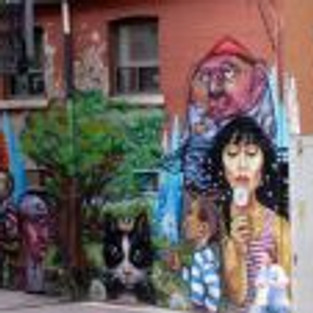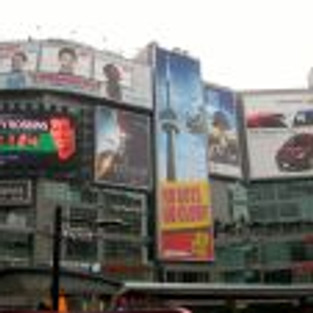Tuesday, July 23, 2013 – Toronto
- Rex Ballard

- Jul 26, 2013
- 5 min read
Updated: May 31, 2020
Tuesday, July 23, 2013 – Toronto
Here we are in Canada. We got into the city nice and early to make our way around this huge city. The city of Toronto boasts a population of 2.7 million. If you include the Greater Toronto Area that includes the city of Mississauga and other communities you are up to over 6 million souls that call Canada home. It is a big city. It is a bit different from New York, the last really big city we were in. The biggest difference is that most of the buildings are new. Also, there is a lot of huge construction projects underway. Several are to improve the roads, subways, trains and other infrastructure to prepare for the upcoming 2015 Pan American Games. There are huge cranes dotting the skyline primarily putting up new condominium towers. The bulk of the 2.6 million people who live within the city limits actually live in the city in one of the many condominiums. It is also one of the most “multi-cultural” cities in the world with many different nationalities living in the city It also has a large LGBT community and plays home to one of the first churches in North America to conduct same sex marriages.
We started our walk in the St. Lawrence Area. One of the most dominating buildings here is the Flatiron building. It is strikingly similar to, although quite a bit shorter than, the more famous Flatiron building in NYC. However, “Torontoans” are quick to point out that their flatiron building was built 10 years earlier than the NYC one. This building was built to house the offices of George Gooderham. He just happened to be one of the wealthiest people on Canada back in 1890 as he founded the Gooderham and Worts distillery. The G&W distillery was the largest distillery in the world back then. So George could afford the $18,000 price tag that it took to build the building back in 1892.
The next building to define the area is the St. Lawrence Market that still operates as a market today. In fact it has been voted as the best Urban Fresh Food market – (who votes for these things – I don’t recall getting a ballot). This huge brick building is actually the 4th version of the market. The original was built on this site in 1803. It and 2 other versions were constructed of wood and burned down a different time. The current version dates to 1890 and it is now made of brick. This market used to sit right on the harbor edge. Today, the harbor is half a mile away. As the city grew, they kept filling the lake. There are old photos in the market that show that vendors would drive their trucks right into the building, park them nose to tail, and then open for business. Today, you can buy all sorts of fresh meats, fish/seafood, vegetables, fruit and flowers. It is a very nice market with great quality
We took a nice walk down the Harbour Front, which has a nice park, great views of the harbour that sits on Lake Ontario and several islands that line the entrance to the harbor. Lake Ontario is so big that on the clearest of days, you can not see the other side of the lake. For all intents and purposes, it is like a huge ocean. Along our walk, we spotted a very cute maltese puppy that was out on a walk with its young owner. Elisa had to stop and pet the dog. I’m not sure what kind of effect she had on the dog, but as soon as she bent down to pet the dog, it promptly went poop – right there on the spot. After the owner removed the offending items, the dog was very content and allowed Elisa to pet her. Along our walk we came upon the Pearl Chinese Restaurant. It was a very nice restaurant with great views of the harbor and the many boaters. It was our good fortune that they were serving Dim Sum (Chinese finger food). This was some of the best Dim Sum we’ve ever had, and boy did we take advantage of it. This is the type of meal where the servers come around in carts and you can see the many different varieties of dishes that are available. We started with delicious pastries with a very flakey and one was filled with wonderful barbecue port (char siu) and the other with a chicken. The meai was then followed by about 10 other different varieties of bot meat, shrimp and vegetable fillings. The way this works is that every time you take a dish, the server puts a little tick mark on a little score card. At the end of the meal the waiter comes and tallies up the tick marks and presents you with your bill. So you, never really know how much you are spending at the time. Unfortunately, our bill came to about $70 for lunch. It was a little pricey but we didn’t mind since it was so tasty.
After lunch we boarded our “Hop-on-Hop-off” city tour bus. It took us around the City showing us the many different sites. We learned a lot about the Toronto and found the tour very interesting. The only thing we didn’t like, was that the buses we were on were genuine “old” English double decker buses. The one we were on was built in the early 60s and the shock absorbers were long past their useful life and apparently replacements are not available. We were able to find a couple of seats on the upper deck. The weather was very nice and it was a little overcast, so the sun didn’t bother us. The only thine we didn’t like was bone jarring ride. We survived.
One of the more interesting stories we heard was about a wealthy gentleman named Sir Henry Pellatt. In the late 1800s he began amassing large amounts of real estate around the fast growing city of Toronto and in the process he made a substantial fortune. Sir Pellatt also visited Thomas Edison’s power generation plant in the states and made the investment to bring electricity to Toronto. He was the only utility and made a lot of money in the process. Around 1911, Sir Pellatt began construction on his mansion, named Casa Loma. It took 3 years to build, but unfortunately with the onset of WW1, the mansion was never completed and at 98 rooms it was the largest private residence in all of Canada. After WWI a major depression struck Canada and Sir Pellatt was experiencing financial difficulties due to the collapse of the real estate market. The city of Toronto was also experiencing serious financial difficulties and they arbitrarily seized the electric utility declaring that it was a critical public asset and that no one individual should own it and they appropriated it from Sir Pellatt – without compensation. Additionally, the city decided that they would increase the property taxes on Casa Loma from $600/year to $1000 / month. This pushed Sir Pellatt over the edge and he went bankrupt. The city acquired Casa Loma in 1933ish for back taxes owed of $27,000. Sir Pellatt had invested over $3.5 million in the construction of the castle. Sir Pellatt passed away penniless, living in a room over the garage now owned by his former chauffeur. What a raw deal – socialism at it’s worst.
To learn more –























Comments